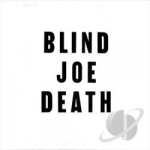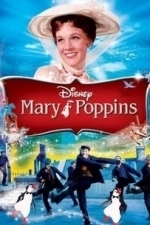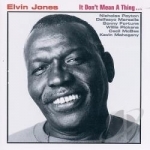Lee Ronaldo recommended Blind Joe Death by John Fahey in Music (curated)

Bkool Simulator
Health & Fitness and Sports
App
Connect it to your trainer and ride with your friends. All the routes on Earth! The most advanced...

ReMix - Split Screen MultiTasking Multi Window
Social Networking and Music
App
ReMix is finally here on our patent pending platform! Use Social Media, Reddit, Tumblr, Google,...
![[10 CD]100 best classical](/uploads/profile_image/987/6dc86d25-d3cf-4627-98c7-4fc10ee4d987.jpg?m=1522340996)
[10 CD]100 best classical
Book
App
10 CD, 40 classical masters, 120 most favorite classical music,Just the best. RO Player, Innovation...
BankofMarquis (1832 KP) rated Mary Poppins (1964) in Movies
Apr 20, 2019
And I shouldn't have worried, for MARY POPPINS is...pardon the expression..."Practically Perfect in Every Way".
Based on the series of books by P.L. Travers and set right around 1900, the film tells the tale of the London Banks' Family - Mr., Mrs., Jane and Michael - who need a new nanny. Both parents are too busy to spend time with their children - he with his job at the Bank (get it - Mr. Banks works at a Bank) and her involvement in the Women's Suffragette movement. Into their lives flies (quite literally) Mary Poppins - a nanny with magical qualities who, along with her friend and cohort Bert, casts a spell on the children - and the Banks' family.
Julie Andrews earned the Oscar for Best Actress for her feature film debut - and it is richly deserved. Her Poppins is stern, smart, brassy and loving - oh...and a marvelous singer and dancer. Just as strong as Andrews is Dick Van Dyke as Bert (though some will quibble with his Cockney accent). I say...don't worry about his accent and watch the wonderful comedic timing, dancing and joi de vivre that Van Dyke brings to this film. He is the "secret sauce" that makes this work. Julie would not be as good - nor would this film be as interesting - without Bert by her side.
EVERY major player shines in this film from David Tomlinson's befuddled, straight-laced British Gentleman Mr. Banks to Glynnis Johns as the enthusiastic supporter of Votes for Women, Mrs. Banks, to the children - Karen Dotrice and Matthew Garber. Special notice should be made to Ed Wynn who's one scene/song/cameo as Uncle Albert - the "I Love To Laugh" scene - is pure gold.
Even the smaller, supporting roles are stellar. Reta Shaw and Hermione Baddely as the "domestics", Arthur Treacher (yes - he, of FISH AND CHIPS fame) as the Constable and Reginald Owen (Scrooge in the 1930's version of A CHRISTMAS CAROL) as Admiral Boom are all fun to watch and match the energy and timing of the leads in their limited screen time.
And...the music...Oh, the Music! Written by Richard M and Robert B Sherman - these songs are classic. Starting with the Oscar Winner for Best Song - Chim Chim Cheree and continuing through Feed The Birds, I Love To Laugh, Jolly Holiday and Let's Go Fly A Kite - ALL the songs are magical and lend a hand to the story - they serve a purpose and are not just a distraction. This film is worth watching just for the rooftop Step-In-Time song and dance number alone.
But the thing that makes this film go is the story - the characters, settings, costumes, songs and dances - are all in service to a touching, sentimental (but not cloying) simple story of a family coming together. It is charming in it's simplicity and leaves everyone with a heart full of joy.
Surprisingly to a modern audience, the special effects (especially the "Live Action and Animation" sequence) holds up really, really well. It is amazing to me how strong these effects are - even over 50 years later.
This is a wonderful, heartfelt family film that deserves a re-watch if you haven't seen it in awhile.
Letter Grade A+
10 Stars (out of 10) and you can take that to the Bank (OfMarquis)

MyMinis - For LEGO® Minifigs
Shopping and Reference
App
MyMinis was last updated for Series 14 with 16 awesome minifigures! Use the Photo Touch Guide to...

Documents Pro by Olive Toast
Business and Productivity
App
Store and view your documents, transferring them easily from any Mac or PC. Full integration with...

Files Pro : Document Viewer
Productivity and Business
App
Store and view your documents, transferring them easily from any Mac or PC. Full integration with...
LeftSideCut (3776 KP) rated Pokémon: Let's Go, Pikachu! in Video Games
Nov 7, 2019
These games took the world by storm and it was easy to see the way. An top down adventure game, with light RPG elements, and the satisfaction of collecting different creatures, whilst the games tag line urged you to 'catch 'em all', it was a set of games that were enjoyed by adults and children alike.
All these years later, Pokémon Yellow has been given a new lick of paint, and re released as Let's Go Pikachu (or Eevee if you prefer).
It's the same in nearly everyway, just with modern graphics, and it's just great.
Firstly, seeing all of these beloved characters in full shiny 3D graphics is pretty special.
The game retains all of the simple camera angles and vibrant colour palette, and it really works.
The game mechanics are identical as well. It's a simple game to get used to, and one that takes a lot longer to master.
The music is also given update, but all the classic score is intact. This 'if it ain't broke' approach that has been applied works wonders, much like the recent Crash Bandicoot and Spyro re releases.
The Nintendo Switch format allows the player to dock the console, meaning that you can play Let's Go through a TV and turns the controller into a Wii style remote, enabling you to 'throw' Pokéballs if that's your style, or you can opt for a classic handheld approach.
Another feature allows you to import Pokémon from the Pokémon Go app, which is a nice touch
With games like Breath of the Wild showing off just what the Switch can do in terms of huge beautiful looking maps, im longing for a proper open world Pokémon game at some point, but Let's Go is a nostalgia filled and fun stop gap that will steal hours and hours of your time.



